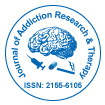Nuestro grupo organiza más de 3000 Series de conferencias Eventos cada año en EE. UU., Europa y América. Asia con el apoyo de 1.000 sociedades científicas más y publica más de 700 Acceso abierto Revistas que contienen más de 50.000 personalidades eminentes, científicos de renombre como miembros del consejo editorial.
Revistas de acceso abierto que ganan más lectores y citas
700 revistas y 15 000 000 de lectores Cada revista obtiene más de 25 000 lectores
Indexado en
- Índice de fuentes CAS (CASSI)
- Índice Copérnico
- Google Académico
- sherpa romeo
- Abrir puerta J
- Revista GenámicaBuscar
- Claves Académicas
- TOC de revistas
- SeguridadIluminado
- Infraestructura Nacional del Conocimiento de China (CNKI)
- Biblioteca de revistas electrónicas
- Búsqueda de referencia
- Universidad Hamdard
- EBSCO AZ
- OCLC-WorldCat
- Catálogo en línea SWB
- Biblioteca Virtual de Biología (vifabio)
- publones
- Fundación de Ginebra para la educación y la investigación médicas
- Pub Europeo
- ICMJE
Enlaces útiles
Revistas de acceso abierto
Comparte esta página
Abstracto
Evidence for Elevated Endogenous Urinary Gamma-Hydroxybutyric Acid Levels: Two Case Reports
Horacio A Capote, Laura Pyzikiewicz, Chukwunonso C Ilogu, Emma Blackley and Luke Martinic
Gamma-hydroxybutyric Acid (GHB) is a naturally occurring metabolite of the inhibitory neurotransmitter, gamma-aminobutyric acid (GABA) that is found in every human cell. Exogenously synthesized in 1960 for possible use as a surgical anaesthetic, GHB exhibits a weak analgesic effect and the potential for seizure-like activity. Since its brief use as an anaesthetic, GHB has been abused as an illicit drug for its euphoric, sedative, and anabolic effects. GHB is now a popular drug-facilitated sexual assault (DFSA) drug, or a “date rape” drug, due to its colourless, odourless, and tasteless properties. Various street names include “G,” “Georgia home boy,” “liquid ecstasy,” “scoop,” and “soap.” Due to GHB’s recreational popularity, the metabolite is now included in the urine toxicology panels of patients undergoing rehabilitation for drug and alcohol addiction. However, exogenous GHB is indistinguishable from naturally produced GHB, which is an important factor to consider when evaluating the urine toxicology panels of patients. Two recent cases exist regarding patients undergoing outpatient rehabilitation who have tested positive for urinary GHB while denying any substance use. The subjects tested positive according to currently accepted cut-off levels on gas chromatography/mass spectrometry analysis (GC-MS) from a purely analytical perspective. From a forensic and indeed clinical perspective, it was found that the subjects had not used GHB. It can be said that these were false positives. Positive urine tests for GHB not only hinder the rehabilitative process, but can also put a patient’s employment status in jeopardy, and may result in legal implications as well. Providers, as well as their patients, depend on the most up-to-date clinical data to render appropriate treatment and to protect against unnecessary repercussions. Therefore, the cut-off level of urinary GHB, as well as any factors that may affect increased endogenous production, must be thoroughly examined in order to facilitate accurate identification of drug abusers and to avoid false positives.
Revistas por tema
- Agricultura y acuicultura
- Alimentación y Nutrición
- Bioinformática y biología de sistemas
- Bioquímica
- Ciencia de los Materiales
- Ciencia general
- Ciencias Ambientales
- Ciencias Clínicas
- Ciencias farmacéuticas
- Ciencias Médicas
- Ciencias Sociales y Políticas
- Ciencias Veterinarias
- Enfermería y atención sanitaria
- Física
- Genética y biología molecular
- Geología y Ciencias de la Tierra
- Ingeniería
- Inmunología y Microbiología
- Química
Revistas clínicas y médicas
- Anestesiología
- Biología Molecular
- Cardiología
- Cirugía
- Cuidado de la salud
- Dermatología
- Diabetes y Endocrinología
- Enfermedades infecciosas
- Enfermería
- Gastroenterología
- Genética
- Inmunología
- Investigación clínica
- Medicamento
- Microbiología
- Neurología
- Odontología
- Oftalmología
- Oncología
- Pediatría
- Toxicología

 English
English  Chinese
Chinese  Russian
Russian  German
German  French
French  Japanese
Japanese  Portuguese
Portuguese  Hindi
Hindi